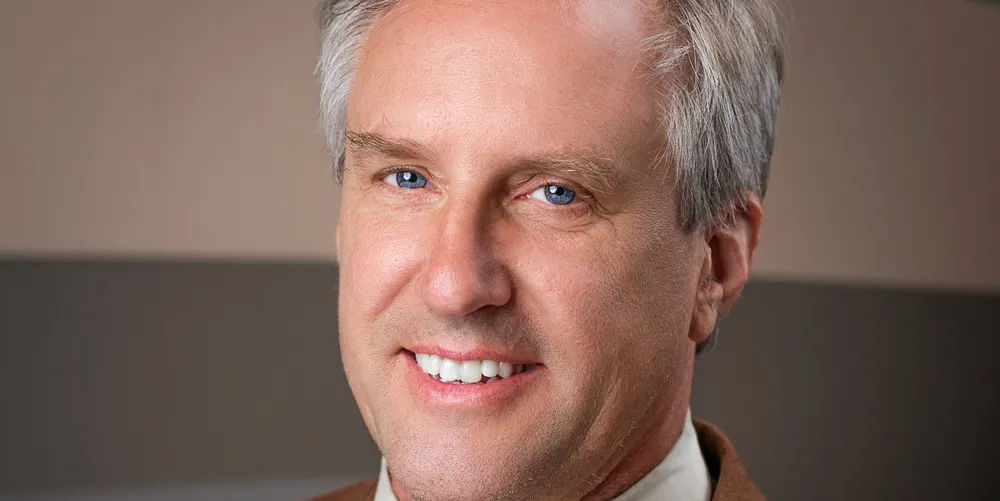Port's $427m windfall and draft state plan boost California floating wind credentials
State with big offshore ambitions aims to offer stakeholders more long-term clarity as Humboldt Bay bags federal millions

The California Energy Commission (CEC) has published a draft of its strategic plan for offshore wind for public review and comment, in what developers see as an important step forward for a state with ambitions of becoming a leading market for floating wind.
The draft strategic plan was issued in accordance with California's Assembly Bill (AB) 525 — passed in 2021 — which aims to provide a framework for offshore wind energy developments in federal waters off California
Chaired by David Hochschild, the CEC had already published preliminary reports on offshore wind under the AB 525 mandate, providing assessments of the economic benefits and plans for the deployment of turbines in coordination with federal, state, local agencies and other stakeholders.
These reports established offshore wind energy planning goals of 2–5GW for the state by 2030 and 25GW by 2045 in the deep waters of the Pacific outer continental shelf, where floating solutions will be needed.
The plan published this week, includes assessments and recommendations related to sea space planning, permitting processes, marine impacts and impacts on fisheries, tribal people, underserved communities and national defence, as well as workforce development, port development and transmission planning and technologies.
The deep waters of t off California’s coast have steep drop-offs and will require offshore wind turbines installed on floating platforms, CEC stated.
Ports plea
The draft document also identified a number of areas requiring public policy support for the industry to succeed.
A chapter on infrastructure said ports and waterfront facilities will play a critical role in developing an offshore wind industry using turbines “that are likely to be 15-25MW".
“Existing California port infrastructure is unable to support an offshore wind industry in the state,” the report stated.
“As it will take a decade to make the needed port improvements that can support the full offshore wind supply chain, the state may need to import components from other parts of the world to meet the state’s 2030 offshore wind planning goals. However, to meet the state’s 2045 offshore wind planning goals significant investments in port infrastructure upgrades are required.”
The CEC continued: “Port development provides an opportunity for California to maximise the economic benefits associated with developing an offshore wind industry by creating jobs and developing a local supply chain within the state.
Humboldt Bay boon
In a move that coincided with the publication of CEC's draft plan, California senators Alex Padilla and Laphonza Butler, along with Rep. Jared Huffman, announced that the Humboldt Bay harbour, recreation, and conservation district will receive $427m for the construction and maintenance of offshore wind infrastructure.
The grant for the Humboldt Bay Offshore Wind MVP (Minimum Viable Port) project comes through a Department of Transportation (DOT) infrastructure grant programme.
The Humboldt Bay project will involve the construction of a modern marine terminal primarily for the transport, import, staging, preassembly, final assembly, launch, in-water construction, and long-term maintenance of floating wind turbines.
The project also includes environmental protection measures such as an eco-shoreline.
“Offshore wind is a key tool for combatting climate change while providing the power we need to improve lives and grow the economy. And we are paving the way here in Humboldt with this first-of-its-kind offshore wind project on the West Coast,” said Huffman.
Galvanising
The draft plan was welcomed by industry representatives.
“The plan is well researched and touches on almost every aspect and lays out what needs to happen and how to proceed if you want to galvanise the sector," said Aaron Smith, chief commercial officer with Principle Power, a floating wind technology company founded in California and now busy with projects in Europe and Asia.
Smith added that the Humboldt port funding initiative demonstrated how projects can surge forward when state and federal entities are aligned.
"We need to pursue all the pillars of offshore wind infrastructure- transmission, ports, procurement- to ensure the timelines align with our goals."
Adam Stern, executive director of trade group Offshore Wind California, called the pan: “an important milestone that underscores California’s commitment to go big on offshore wind to help meet its ambitious climate, clean-energy, and grid-reliability goals.”
Equinor off the blocks
CEC's draft plan stated that offshore wind development off the California coast will occur primarily in federal waters under the exclusive jurisdiction of the Department of Interior’s Bureau of Ocean Energy Management (BOEM).
In December 2022, BOEM conducted the Pacific Wind Lease Sale 1 (PACW-1) for commercial leasing wind power on the outer continental shelf off California, resulting in awards to five lease holders off California’s North and Central Coasts: RWE; California North Floating (CIP); Equinor; Golden State Wind (Ocean Winds and CPP Investments), and Invenergy.
The CEC said it expects to announce and host a workshop to provide information and receive feedback on the draft strategic plan at a later date.
(Copyright)